It is, we'd argue, fair to say that most people in western Europe still have a very stereotypical, skewed, if not prejudiced view of late 20th century design in and from those nations that form the eastern half of the European continent.
With Retrotopia. Design for Socialist Spaces the Kunstgewerbemuseum, Berlin, in cooperation with numerous museums and institutions from across eastern Europe, provide an introduction to post-War 20th century architecture and design in and from Croatia, the Czech Republic, East Germany, Estonia, Hungary, Lithuania, Poland, Slovakia, Slovenia and the Ukraine, and in doing so invite us all to begin to approach more probable and more meaningful positions......
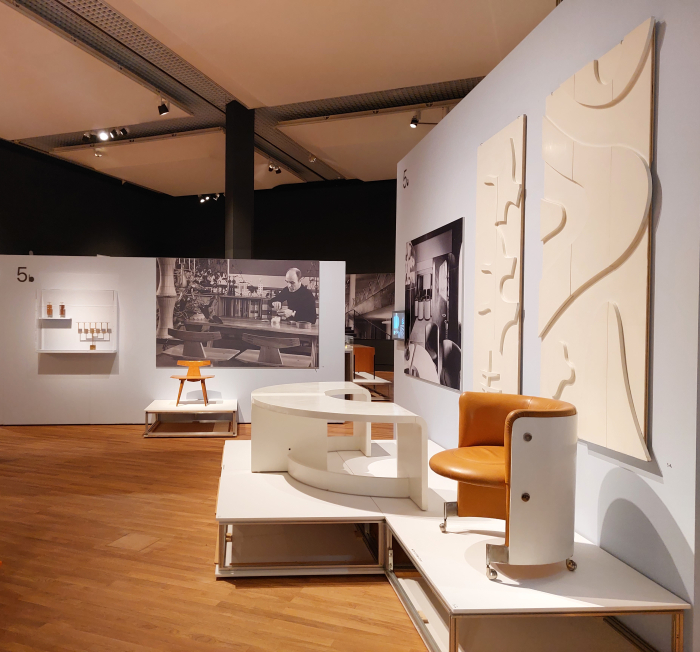
As oft discussed in these dispatches, most commonly, though not exclusively, in context of eastern Germany, with the fall of the Iron Curtain the narrative was quickly established and disseminated, and popularly accepted, that the West had defeated the East, that Capitalism had vanquished Socialism. A mindset of superiority of the nations of western Europe over those of the east that tended to become further entrenched and validated amongst western Europeans in the course of the 1990s and 2000s as citizens of the former east headed west looking for work, and invariably, found poor pay and exploitation and discrimination. A situation that was essentially colonialist, arguably also racist. And a mindset of superiority that tended to be further reinforced by the popularly accepted understandings in the west at that period of the lands of eastern Europe as being in a state of infrastructural disrepair, environmental distress and general poverty. A view that while not completely incorrect, didn't justify the associated degradation and denigration of the nations and their citizens as somehow inferior to those of the west. Not least as that view required the west to actively deny its own social, economic, environmental and infrastructural problems; an opportunity to distract itself from unpalatable truths through pointing fingers towards the east a great many in western Europe were only too happy to take.
Thankfully that is now all slowly changing, slowly ever more western Europeans are learning a more realistic, more considered and reflected understanding of the lands, the peoples, the cultures and the (hi)stories of eastern Europe, are listening more to eastern European voices rather than to the western European mansplaining of the lands, the peoples, the cultures and the (hi)stories of eastern Europe. A slow process that has been marginally accelerated since the Russian invasion of Ukraine, and the acceptance that invasion forced amongst many in western Europe of just how little we know of eastern Europe, and for all of the former Soviet republics, beyond our own ingrained stereotypes, and/or an unquestioned, unchallenged, tourist gaze, and thereby an increased appreciation of the necessity of us all better understanding the nations of eastern Europe. But there is still a long way to go: two generations of separation and poisonous propaganda on both side couldn't be, can't be, repaired in one generation. As the USA may one day discover.
As a component of that process design can play an important and meaningful role, not least through the inherent links between objects and the societies in which they arise, between objects and the cultural, social, economic, political, technological, et al contexts in which they arise: the artefacts of late 20th century Croatia, Poland or Ukraine, as with the artefacts of late 20th century Ireland, Sweden or Portugal are no different to the artefacts of ancient Greece, ancient Mesopotamia or Pre-Hispanic Mexico, just much newer. Often within living memory. Very often still in use. A fact which makes them particularly informative and instructive and interesting. Makes design, design positions, the results of design processes etc, particularly good and apposite tools for approaching more probable and meaningful understandings of any given nation or society.
The problem is, most people in western Europe still have a very stereotypical, skewed, if not prejudiced view of late 20th century design in and from eastern Europe, that long believed superiority of the west being effortlessly transposed onto our understandings of design, those popularly accepted understandings of disrepair, distress and general poverty being applied to design: design from post-War 20th century eastern Europe being generally denigrated as less valid, less meaningful, less worthy than that produced in the west. Certainly considered inferior to that produced in the west. Often little more than a cartoon imitation of design in and from western Europe. And thus before design from eastern Europe can be employed as a tool to approaching more probable understandings of eastern Europe, we all have to learn to better understand and analyse and locate design in and from late 20th century eastern Europe.1
And as Retrotopia neatly underscores, there is a lot to learn.
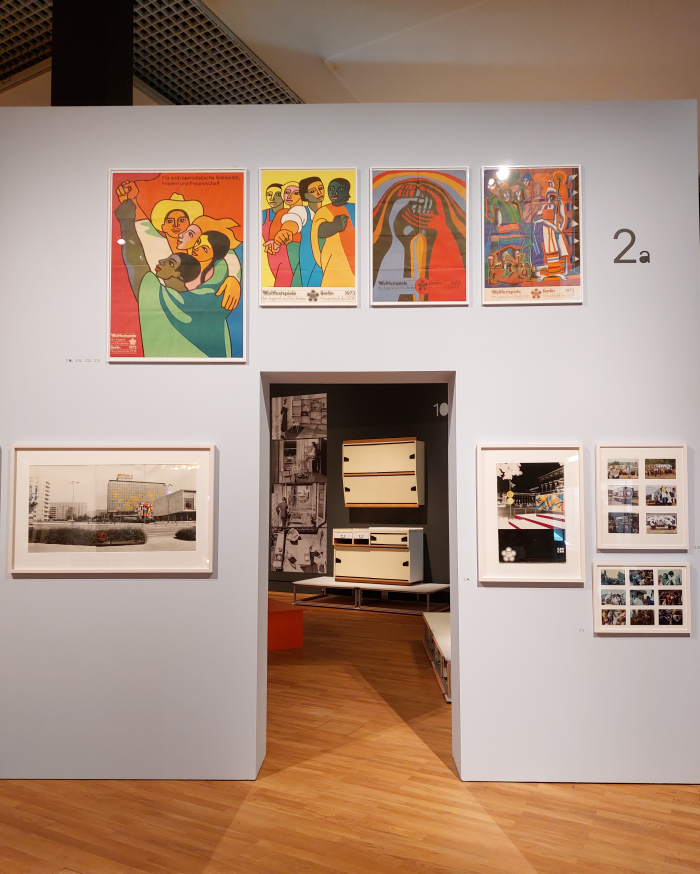
An exhibtion in two parts, technically two exhibitions in one, Retrotopia opens, certainly we'd argue it is recommendable to begin, with what is, in essence, a poster and vitrine exhibition; a showcase curated by Mari Laanemets from the Estonian Academy of Arts, Tallinn, which alongside introducing some of the networks, institutions and design schools that played key roles in that period, also briefly explores the exhibitions and trade fairs that were staged and attended, domestically and internationally, and the nature of the discourses entertained and propagated in the lands and decades under consideration. If one so will concerns itself with the ecosystems in which design in Croatia, the Czech Republic, East Germany, Estonia, Hungary, Lithuania, Poland, Slovakia, Slovenia and the Ukraine existed, developed and was understood in the late 20th century.
A presentation that alongside introducing both state affiliated design institutions such as, for example, the Polish Instytut Wzornictwa Przemysłowego [Institute of Industrial Design]2 or VNIITE [All-Union Scientific Research Institute of Technical Aesthetics] as the principle design institution in the Soviet Union, and also independent institutions such as, for example, Studio za stanovanje im opremo [Studio for Housing and Interior Design], Ljubljana, or the Hungarian Fiatal Iparművészek Stúdiója Egyesület [Studio of Young Designers Association] also features exhibtion platforms such as the Biennial of Industrial Design, BIO, inaugurated in Ljubljana in 1964 as the world's first design biennale, and an event still staged today, and also design schools such as, and again amongst many others, the Department of Industrial Artistic Design within the, then, Lithuanian SSR State Art Institute, Vilnius, the short-lived Academy of Applied Arts, Zagreb, or the Kunsthochschule Berlin-Weissensee and the Burg Giebichenstein Halle in the DDR. And in doing also introduces a vast roster of protagonists including, for example, and amongst many, many others: Wanda Telakowska, the founding director of, and an influential protagonist at, Instytut Wzornictwa Przemysłowego, Feliksas Daukantas the long year director of the Department of Industrial Artistic Design, Vilnius, or the architect Oskar Hansen who ran regular workshops at the Academy of Fine Arts, Warsaw, workshops which aimed to encourage the development of, for example, spatial perception or decision making processes amongst the students and workshops for which Hansen developed numerous tools and manual, practical, exercises. And also the Austro-American designer and design theorist Victor Papanek who, as we all learn in Retrotopia, was a regular visitor to, then, Yugoslavia, where his criticisms of, and warnings of, industrial design(ers) appear to have fallen on particularly fertile ground.
And thus a showcase that very neatly provides for an introduction to the infrastructural and conceptual background to and of design in the countries under consideration, and also helps elucidate both the connections and interchanges between the various nations, and also the differences and divergences, that were all integral parts of the maintenance and vitality and validity of those ecosystems.
And an introduction to the infrastructural and conceptual background that you can, must, take with you into second part of Retrotopia and its brief introductions to the more practical, tangible, aspects of design in and from Croatia, the Czech Republic, East Germany, Estonia, Hungary, Lithuania, Poland, Slovakia, Slovenia and the Ukraine.
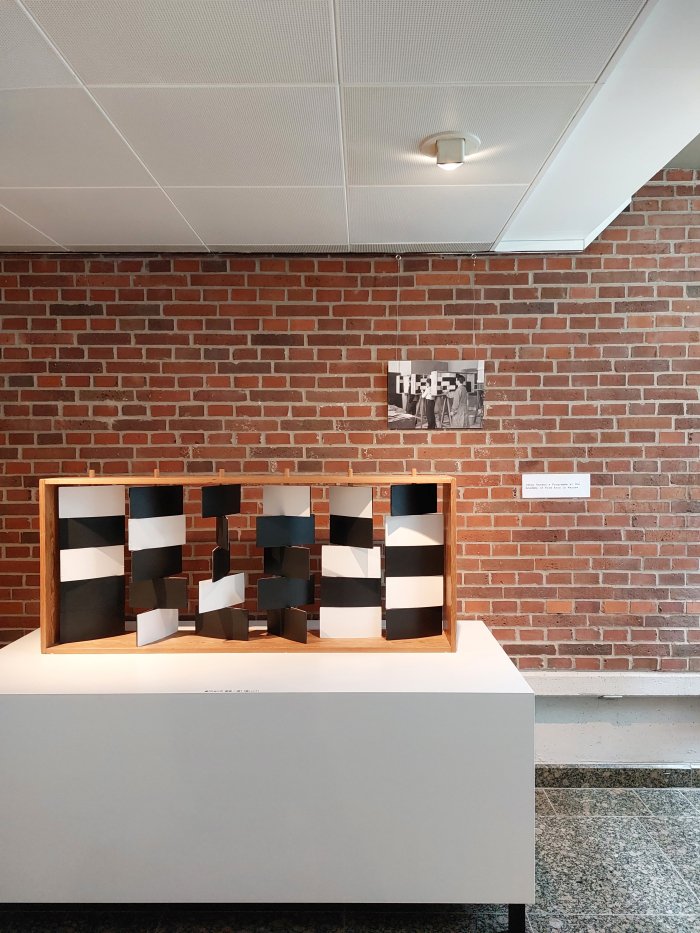
A space which, to be honest, initially somewhat overpowered, overtaxed us: the exhibition concept and design sees each nation given their own space, a space which is divided into two presentations, one discussing the design of private spaces, one discussing the design of public spaces, and which at first is very confusing: the lack of a curatorial thread or any semblance of an inherent narrative structure, utterly throwing you. Certainly threw us. But slowly you, we, get your, our, bearings and realise that despite your initial, and in our case very audible, Eh!!!
(a) it is exactly how it should be, because that's how it was: late 20th century eastern Europe wasn't a homogenous mass that can be quickly explained in universal terms, despite what western propaganda may have told you and tells you.
and
(b) it bequeaths you a very satisfying freedom. Or does once you understand it and learn to use it. You're not guided by a curator's narrative, not taken on a journey through late 20th century design in eastern Europe in the company of a curator and following a curator's map, but are free to compose your own journey by jumping between numerous curators' narratives: and there are a lot of curators' narratives, if our math is correct Retrotopia is the result of contributions by some 20 curators from some 19 museums and institutions, which means there's an awful lot of differing routes via which to approach and navigate through Retrotopia. Which it also very much actively encourages you to do; as an exhibition Retrotopia very much seeks to provide an introduction to themes and topics and moments and positions and practitioners, and then leaves you to engage with them as you will. And does such very well.
If.......
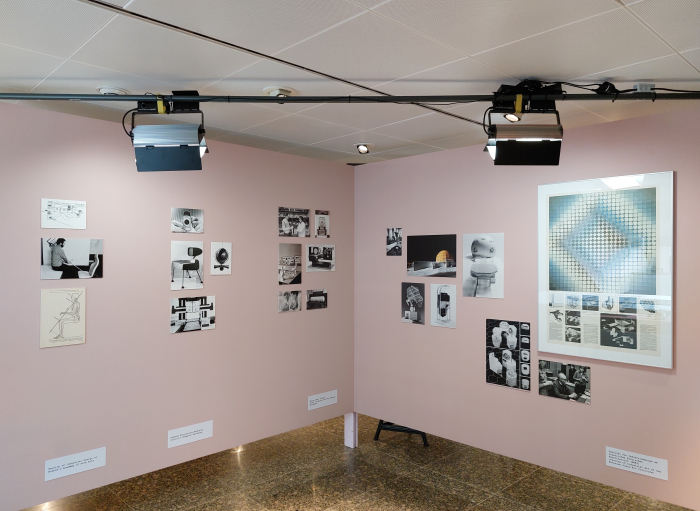
.......there is a lot to read.
Now you know us, we passionately argue you can never, ever, have too much to read in an exhibition, the more the better: at times Retrotopia caused us to doubt the validity of our well practised argument. There is a phenomenal amount to read, alone the booklet of background explanations for the poster and vitrine showcase is a hefty tome. Add to that the thick booklet for the practical part and you've got a multi-volume reference work that would require a new shelf on your bookcase. A phenomenal amount. Which while not unwelcome, can be a little daunting, was for us, and we like reading, we enjoy reading; however, if you learn about the world via Instagram and TikTok we can well imagine it being not just daunting but intimidating. Digga.
But do please stick with it, find your own focus, block out the rest if need be, don't feel you have to engage with everything in minute detail, you don't, some parts will interest you more than others, it's inevitable and unavoidable, arguably desirable, in such a pleasingly widely scoped and contentually varied presentation. And if you do stick with it, and do find your way through and around it, you will discover that Retrotopia is one of those exhibitions that is less about the objects on show, as to the myriad stories, positions, moments et al the objects allow access to, about the understandings of the (hi)story of design and the contexts of that (hi)story the objects allow access to. The objects are but an introduction, the beginning of something which you are free to develop and extrapolate as you wish. It isn't really about the objects your looking at.
Which, as ever, doesn't mean you can't enjoy and engage with the objects as objects, but does mean you shouldn't get distracted by them.
That said, we did get very distracted by a very great many.
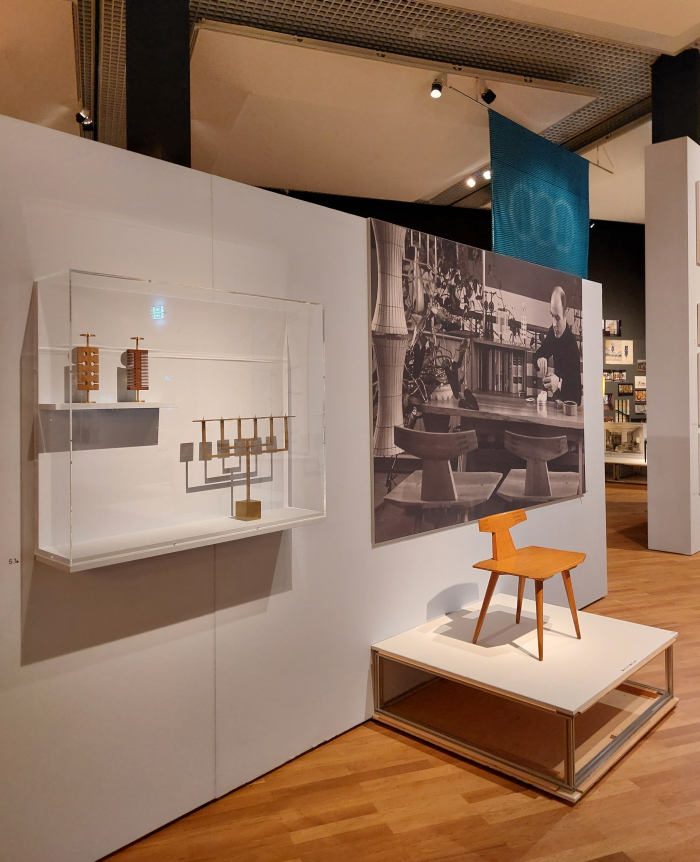
Not least by a ca. 1961 wooden chair by Slovak designer Viktor Holešťák-Holubár briefly discussed by Viera Kleinová from the Slovak National Gallery, Bratislava, in context of craft production and approaches in post-1968 Czechoslovakia; a wooden chair particularly interesting not just because it is an utter joy as a construction, as an approach, as a position, as a meaningful use of wood, and as a chair, whereby we sadly couldn't sit on it and so can't comment on it as an actual chair for actually sitting on, but let's just assume it's going to be most satisfying, but also because of the comparisons and contrasts it allows.
On the one hand internally, inner Czechoslovakian, inner Slovakian, with a chair designed in 1972/73 by Vojtech Vilhan and Ján Bahna for the Government lounge at Bratislava Airport, a project discussed by Klára Prešnajderová from the Slovakian Design Center, Bratislava, and a chair, a barrel chair, which although formally very reminiscent of the early 20th century barrel chairs of a Charles Rennie Mackintosh or a Frank Lloyd Wright, in its mix of gloss painted moulded wood, high-gloss metal feet and abundant leather upholstery, including decadent leather upholstery where leather upholstery isn't needed, stands in direct contradiction to the arts and crafts tradition inherent in the early 20th century work of a Charles Rennie Mackintosh or a Frank Lloyd Wright. A contradiction it very deliberately stands in, it wants to represent a different future to that the arts and crafters sought, a different future to that which Holešťák-Holubár's chair is openly striving for, and superficially very much appears to represent that future. And then Prešnajderová explains in her accompanying text that the realities of early 1970s Czechoslovakia meant Vilhan and Bahna's chair was created by hand in the same Center for Arts and Crafts, Bratislava, as Holešťák-Holubár's chair. Which not only allows access to considerations on relationships between formal expression and the means of production, between the intent inherent in a work and its means of production, that were such important parts of discourses and practice in early 20th century craft and design, but also helps underscore the dangers of understanding objects of furniture from a superficial viewing, of objectification rather than questioning and listening. And also meaning Vilhan and Bahna's chair stands in Retrotopia as a (potential) metaphor for the inaccurate, incomplete, manner in which late 20th century design from eastern Europe is viewed in the west. Things aren't always what they seem to be.
And on the other, a comparison externally, internationally, with Sándor Mikó's 1969 chair for the Te + Én espresso bar in Budapest, a project discussed by Judith Horváth, Melinda Farkasdy & Rita Komporday from the Museum of Applied Arts, Budapest, in context of a discussion on Dwelling vs Living in the Hungary of the 1960s and 1970s, and a chair which as with Holešťák-Holubár's is craft. But with a very, very different understanding of craft: where Holešťák-Holubár's chair is characterised by its carpentry, it's passion for carpentry, something, for us, tending to be defined by the single dovetail joint in the middle of the backrest, a construction feature which for us deliciously reinforces the simplicity of the concept that realised such a complex work, while also ably demonstrating that construction features can be decorative features if approached with an honesty and diligence, a position we can well imagine a John Ruskin approving of. Mikó's chair in contrast is characterised by its unequivocal rejection of carpentry, its open disdain for carpentry, its celebration of its lack of carpentry, being as it is little more than four quadrats of wood rudimentally, if securely, fixed together. A simplicity of construction deliciously underscored by the feet which are just wooden blocks with slits cut out into which the vertical quadrats slot. But which as a work is no less engaging, charming and communicative than Holešťák-Holubár's. Nor any less valid today than Holešťák-Holubár's. Both having travelled effortlessly from then to now. If a work demanding a different future from that demanded by Holešťák-Holubár's. And representing a conceptually different late 20th century re-imaging of the early 20th century barrel chair to that proposed by Vilhan and Bahna. And is a work vocally extolling the virtues of Do-It-Yourself and simultaneously looking forward, expectantly, to the arrival of Open Design; while also finding an echo of sorts in the 21st century in some of the earlier works of Budapest's Architecture Uncomfortable Workshop collective, works that we're still obsessing about after all the years and adventures since those first fateful meetings. And early works by Architecture Uncomfortable Workshop which also echo back to the angularity and directness of a Frank Lloyd Wright to be found in a more rational manner in Sándor Mikó's Te + Én barrel chair.
Which is a lot of dots to join. Albeit with no one solution, but numerous, endlessly so, possible solutions.
As is Retrotopia.
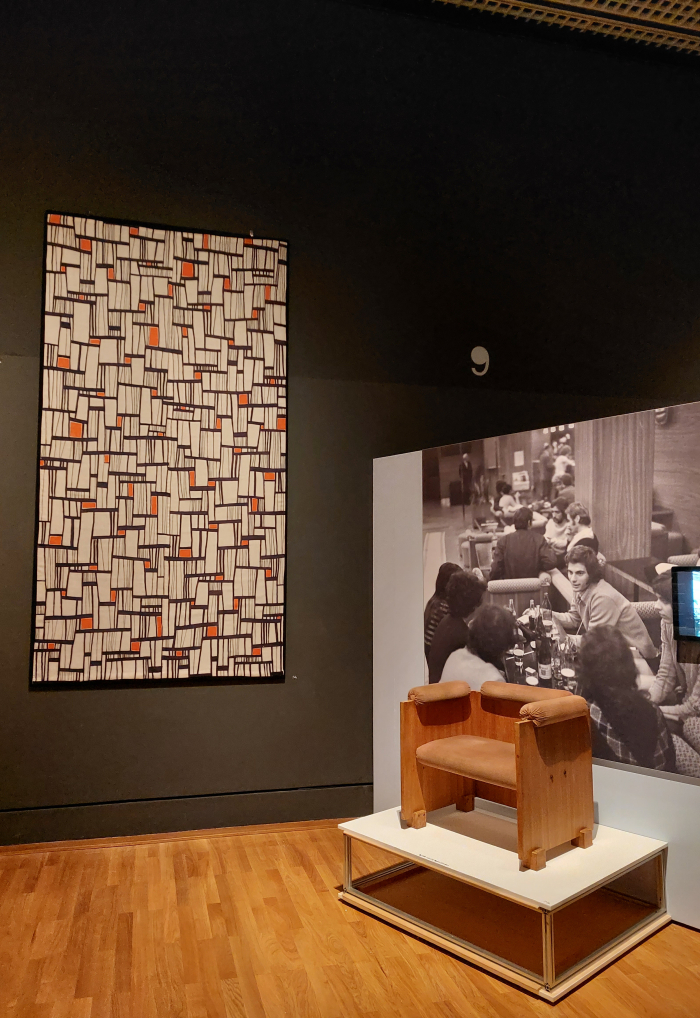
In addition we spent a lot of time with the Radikál wall unit by Gerald Neusser through Interiér Praha from 1971 presented in context of a discussion by Rostislav Koryčánek from the Moravian Gallery, Brno, on the rise to prominence of the high-rise, prefab, flats in late 1960s/early 1970s Czechoslovakia, and a variable, modular, wall unit which very much reminds of Rudolf Horn's 1967 MDW system developed in East Germany not only in terms of its form and functionality, whereby the detailing of Neusser's system, certainly on that example presented in Retrotopia, is slightly more opulent, slightly more representative, than Horn's, a state of affairs which may say more about differences between 1970s Czechoslovakia and 1970s DDR than differences between Horn and Neusser, but also in terms of both systems' very similar understandings of domestic spaces and relationships with furniture; with a ca. 1960 shelving system by Zdzisław Wróblewski that is, sadly, only represented in two photographs in the Institutions chapter of the poster and vitrine showcase in conjunction with the Instytut Wzornictwa Przemysłowego for and with whom Wróblewski was active for many years, but a shelving system which, as far as we can ascertain from those photos, is based on a satisfyingly stupidly simple tool-free construction principle which poses the question why has anyone else designed shelving systems since 1960, Wróblewski solved that problem; with the concept of Open Form as developed by the aforementioned Oskar Hansen and discussed in the poster and vitrine showcase chapter Discourses, a concept developed by Hansen in the 1950s and which is, in essence, concerned with a position that any given form or function shouldn't be definitively defined but must incorporate freedom for further development, an in-built freedom and flexibility defined by Hansen in context of architecture but we'd argue also applicable in product design, and an in-built freedom and flexibility that can be considered not only as linking back to a Mart Stam, but which since the 1950s has become increasingly relevant, and also regularly practised, not least in modular systems, and which would bring us back to and amongst other works, the Radikál wall unit and MDW system. Or bring one to contemporary management theory as opposed to 1950s management theory.
With the so-called Heliopolis Olympic village concept developed by Slovak architecture group VAL between 1968 and 1974 as a component of a planned, but never submitted, application by Czechoslovakia to host the 1984 Winter Olympics, a project which proposed placing a large, as in massive, birdnest-esque ring structure atop the High Tatras, a building floating high over the Vyšné Žabie pleso lake, by way of providing a base for those Olympics, and subsequently as an aid to, a location for, developing the tourism industry in the High Tatras, while protecting the natural environment from the increased human activity it sought to encourage, and a theoretical, conceptual, speculative position on future building typologies and spatial use in context of the complex relationships between the built environment and the natural environment humanity depends upon but all to infrequently considers, that finds a contemporary echo, structurally and conceptually, in the so-called Earth Stations developed since 2018 by Michel de Lucchi's AMDL Circle practice; with a selection of 1960s Hungarian carpets depicting, celebrating, the heroic housebuilders of the period, no honest, we've seen them, and which as such stand incongruously juxtaposed to the traditional Middle Eastern carpets and their depictions, celebrations, of oases, as discussed in, and through the installation Meadow by Alexandra Kehayoglou re-imagined in, Garden Futures. Designing with Nature at the Vitra Design Museum. While the projects by Ukrainian architect Iosif Karakis, and the interior architecture projects by his daughter Irma Karakis, presented in a discussion by Ukrainian architectural researcher Alex Bykov, stand as a very stark reminder of the current realities in the country. For all the model of, if we've correctly understood, a proposal by Iosif for housing blocks in the Troieshchyna neighbourhood of Kyiv, a neighbourhood that was one of those attacked in the earliest days, earliest hours, of the Russian aggression, and which had they been realised may or may not have survived that assault. And a model of a building from Iosif Karakis' so-called Housing of the Near Future project which underscores that no matter how near that future is, it is always unknown until it arrives. 🇺🇦 ✊
Then there is Bruno Tomberg's modular furniture system, a modular system which, essentially, is nothing more complicated than a wooden X, yet which, and as can be seen and enjoyed in Retrotopia, through the addition of a tray becomes a side table, with the addition of a V-shaped cushion becomes a stool, and which can also be stacked to form shelving units, not that great admittedly for displaying ornaments, unless they're wedge shaped, but excellent for books and records. And equally excellent for flexibility in a small apartment and/or a growing household. And a system presented in Retrotopia in context of reflections by Kai Lobjakas from the Estonian Museum of Applied Art and Design, Tallinn, on the Ruum ja Vorm [Space and Form] fair, an institution co-initiated by Tomberg, an institution staged in 1969, 1972, 1976 and 1984 and which placed its focus very much on experimental and conceptual approaches to furniture and spatial design, and which, as Lobjakas notes, for many years was the only such experimental, conceptual, furniture/interiors platform in the, then, Soviet Union. Lobjakas also noting that despite its experimental and conceptual nature and focus some actual commercial furniture did result from Ruum ja Vorm. Of which Tomberg's system doesn't appear to have been one. Which is surely an error needing rectifying.
One of a great many errors needing rectifying one comes across in Retrotopia, for all in context of understandings and appreciations of design in and from Croatia, the Czech Republic, East Germany, Estonia, Hungary, Lithuania, Poland, Slovakia, Slovenia and the Ukraine.
And which Retrotopia can help us all begin to rectify.
Despite the title.
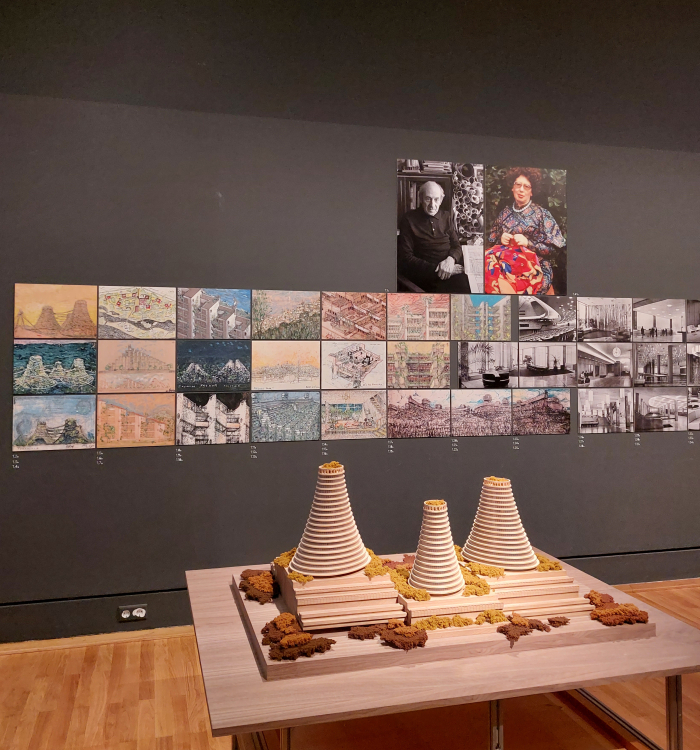
Here is, sadly neither the time nor place for a discussion on the term Retrotopia in context of Zygmunt Bauman, István Rév, William Morris, Kraftclub, et al, we wish it were, but sadly it can't be. But please do undertake that discussion on your own. Nor can we discuss here in full detail why we dislike the use of the phrase as the exhibition title, again we wish we could, but time pushes on relentlessly; save to note that in the exhibition catalogue Anna Maga from the National Museum, Warsaw, notes that in their preparatory discussions with designers active in Poland in the decades before 1989, many expressed a "reluctance to accept the term utopia", arguing that they wanted "design to have nothing to do with utopia".3
We have similar problems with the "retro" part.
Yet unlike those Polish designers who, following discussions with Anna Maga and her colleagues, came to accept and understand the use of "utopia", having viewed the exhibition we still have problems with "retro". Arguably more than we did before.
Not least because, you can't separate words from the context of their use, and regardless how "retro" may or may not be understood in other contexts, in context of our objects of daily use "retro" has a very particular understanding. And there are only very few words that in their popular usage and understanding in context of our objects of daily use stand as aggressively diametrically juxtaposed to "design", as "retro". And given that part of the problem of the popularly skewed appreciations of design in and from late 20th century eastern European is that it is popularly viewed as something inferior, something cartoon, something, fun, disposable, faddish, something with nothing of value to impart, something from a time past that has no contemporary relevance, something "retro", its use in the title tends to imply that Retrotopia is going to reinforce the status quo. Which it doesn't. It challenges the status quo. Actively challenges you to challenge the status quo. Yet, and unless we missed it, which is always possible and probable, there is no discussion in the exhibition or in the catalogue on the title of the exhibition and its relationship to the content of the exhibtion. Which we'd argue would be important to avoid confusion, for all amongst those who don't invest the time to read the texts and just view the objects as objects. Who just do that superficial thing. That objectifying thing. With the "retro" part of the title in the forefront of their thoughts.
And that in Berlin. A city who this summer will once again be full of unthinking, uncaring tourists delighting in the horrors and perversions of the DDR dictatorship, buying into the easy toxicity of Ostalgie, the cool retroness of the DDR, that DDR as a retrotopia that does such harm to contemporary civic and social society; rather than taking the opportunity of being in a city that represents, when a not exact then certainly a very detailed impression of, a microcosm of 20th and 21st century century Europe, as an opportunity to explore in more detail and nuance that (hi)story. To explore that (hi)story of the European continent as being a shared one in which the lands of the east contributed as much as the lands in the west, in which the the contribution of the lands of the east is every bit as valid as that of the lands of the west.
An opportunity Retrotopia also provides, not least through the geographic and chronologic dot joining that one is invited to undertake, and the very familiar positions and challenges and solutions, and utopias, it presents, if in contexts that are often unfamiliar, unknown, to those who have never seriously and openly concerned themselves with late 20th century eastern Europe.
An opportunity which you should, must, take.
And a retrotopia you must deconstruct.
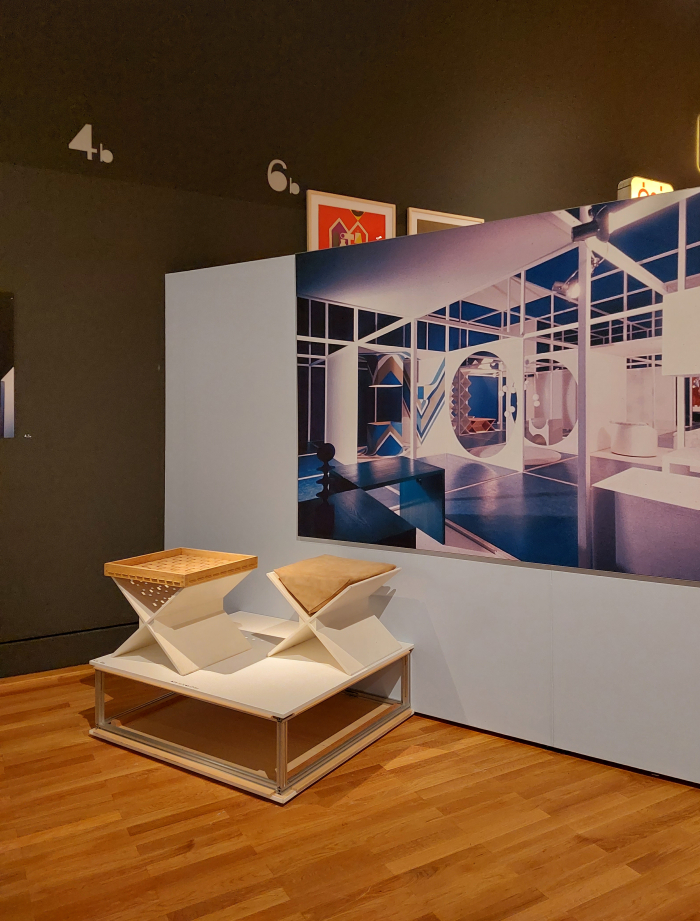
In the booklet for the practical part of Retrotopia Claudia Banz, the exhibition's lead curator from the Kunstgewerbemuseum Berlin, talks of the poster and vitrine showcase as the Retrotopia Archive; however, we'd argue, as an exhibition Retrotopia as a complete organism has very much the feel of a digital archive, we can well imagine it working excellently as an online resource with abundant and copious interlinking. And where the amount to read would be more empowering than daunting. If that is something in planning, we know no, but it definitely should be. And for all should be an archive intended to expand and grow over time. And if funding is the problem, surely it's exactly the sort of project advancing closer cooperation and greater understanding within Europe that the EU exists to fund.
As a physical exhibition Retrotopia is however also a very useful resource, one varied in not only objects and genres and positions but themes; and one that quite aside from the innumerable introductions it enables also very satisfyingly opens fresh perspectives, expands your vista, or perhaps more accurately allows you to appreciate that there is a much wider vista waiting to be discovered.
And also very satisfyingly allows for differentiated approaches to definitions and appreciations of the "spaces" of the title, and which in doing so tends to imply the disservice we do ourselves in our popular understandings of, and strict classifications of, "spaces".
And also very satisfyingly, most satisfyingly, and most importantly, allows, unquestioningly allows, self-evidently allows, design from eastern Europe to stand on an equal footing with that from the west, that position it was long denied, is all too often still denied: ¿how many museum collections in western Europe contain late-20th century works from eastern Europe? We're guessing none. And expect to be quite close. A situation Retrotopia tends to argue needs to change. Urgently.
An argument elegantly backed up by the amount to read; volumes of material and words that underscore just how much introductory, explanatory, work still needs to be carried out so that such volumes of text are no longer necessary. So that we're all familiar with the protagonists and the institutions. So that design from late 20th century eastern Europe can stand alongside design from late 20th century western Europe without comment, simply as components of the same elucidation or argument. And in which context we do hope that other museums in the west of Europe will feel motivated to question their own position to design in late 20th century eastern Europe, and to take up the baton from the Kunstgewerbemuseum Berlin and present more late 20th century eastern European design, perhaps also with a bit more focus than Retrotopia's pleasing wide scope can allow. Which shouldn't be a problem for as Retrotopia elegantly and effortlessly underscores, there a lot to work with.
A lot to discover. A lot to be taught. A lot to correct.
Retrotopia can be but a start, an introduction. And as such, as an introduction, is a very pleasing and very satisfying one. One that is also an unmistakable, clearly articulated and readily comprehensible admonishment to us all to get ourselves out to Croatia, the Czech Republic, East Germany, Estonia, Hungary, Lithuania, Poland, Slovakia, Slovenia and the Ukraine and to start exploring and discovering their design (hi)stories, to join dots from the early 20th century to today, to join dots from the late 20th century to today, to join dots from east to west and west to east, and in doing so to approach those more probable and more meaningful positions on late 20th century design in and from eastern Europe we in the west must achieve. And from there to approach the more probable and more meaningful appreciations of the lands, the peoples, the cultures and the (hi)stories of eastern Europe that we in the west must achieve if we are to have a sustainable, durable, inclusive European continent.
Retrotopia. Design for Socialist Spaces is scheduled to run at the Kunstgewerbemuseum, Matthäikirchplatz, 10785 Berlin until Sunday July 16th
Full information, including information on opening times, ticket prices, current hygiene rules and the accompanying fringe programme can be found at www.smb.museum/retrotopia
In addition an accompanying publication featuring short essays from all the curators, which expands on the many words in the exhibition, is available.
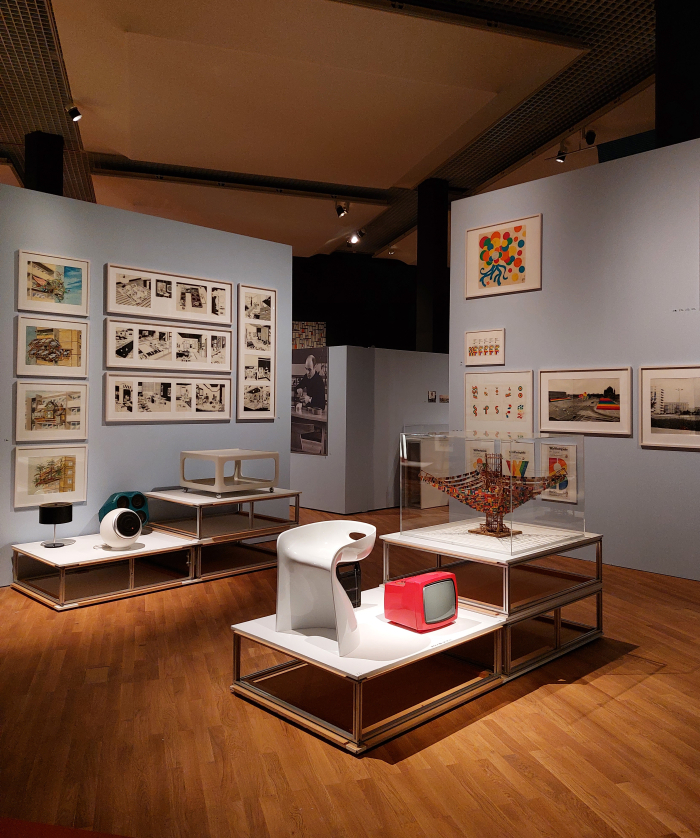
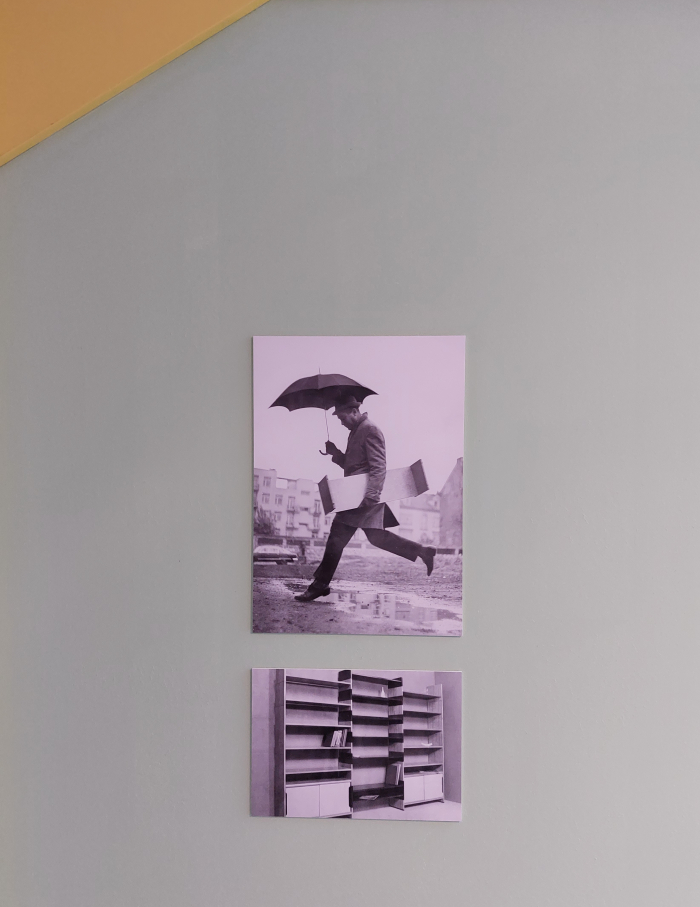
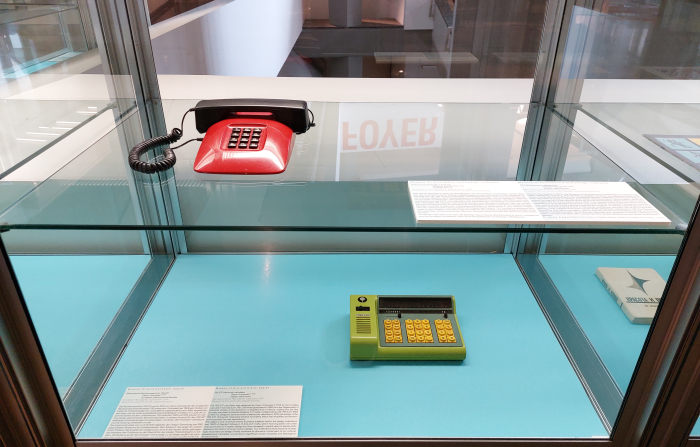
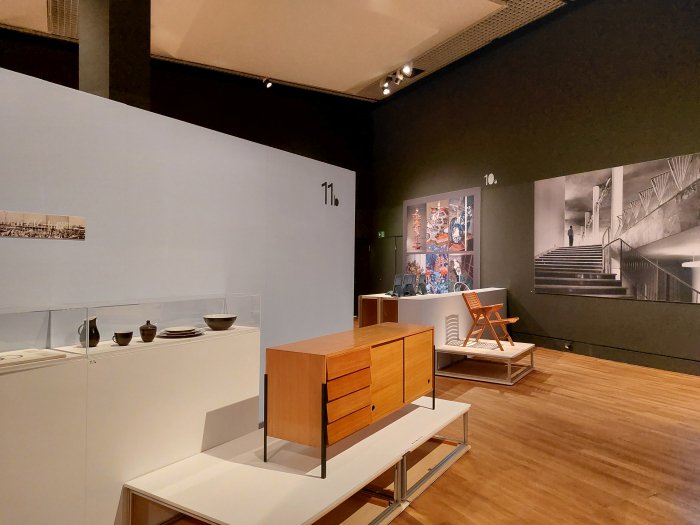
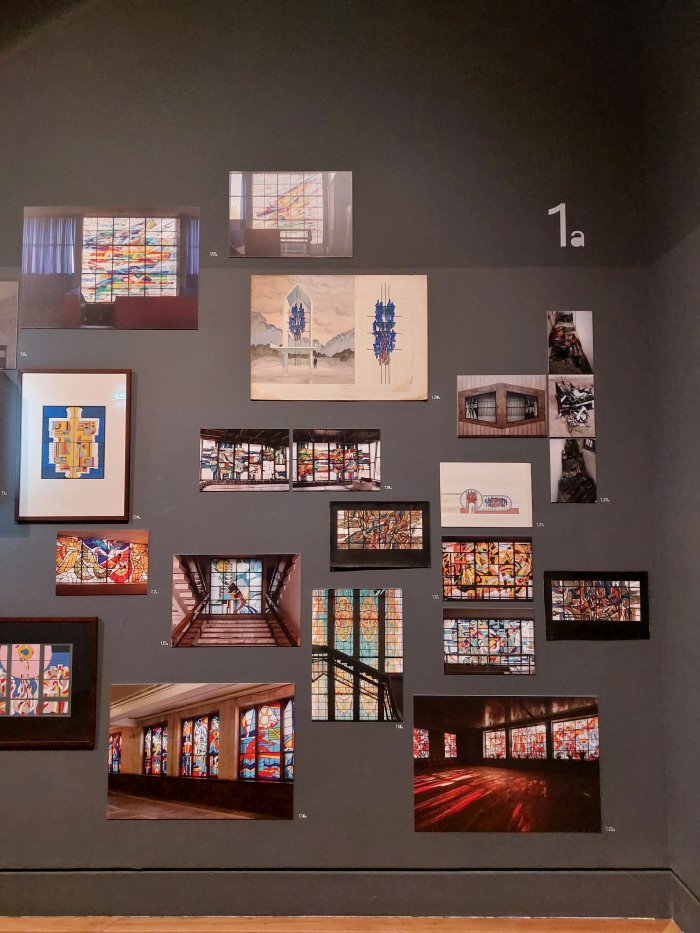
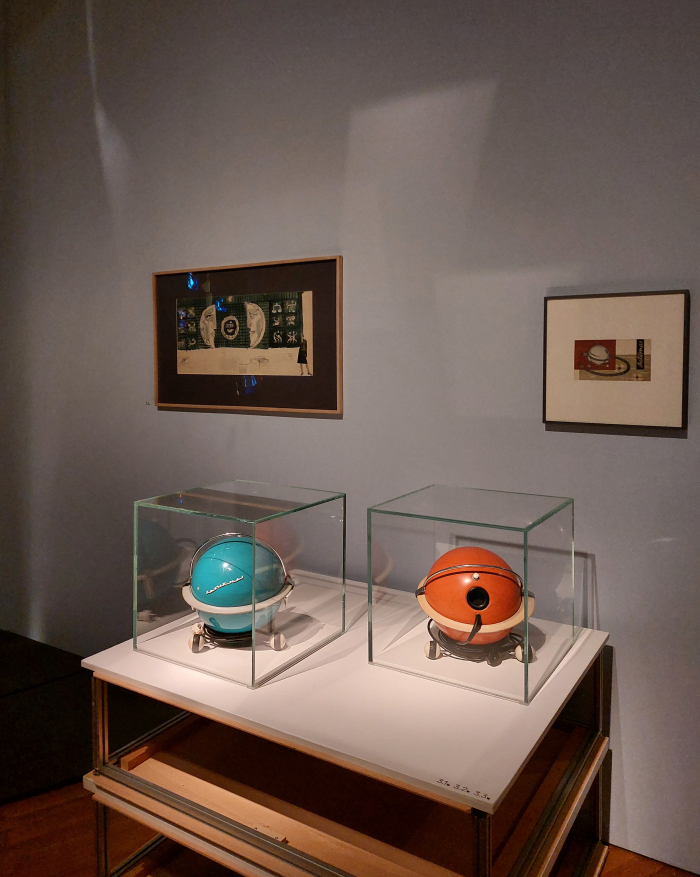
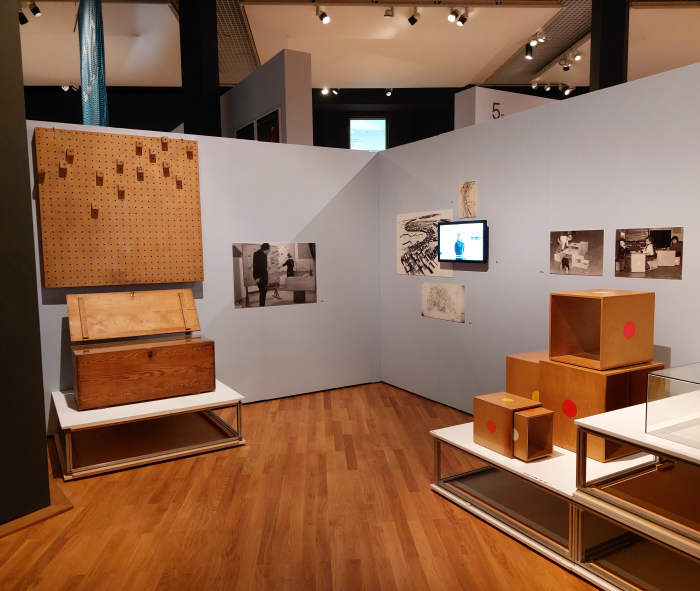
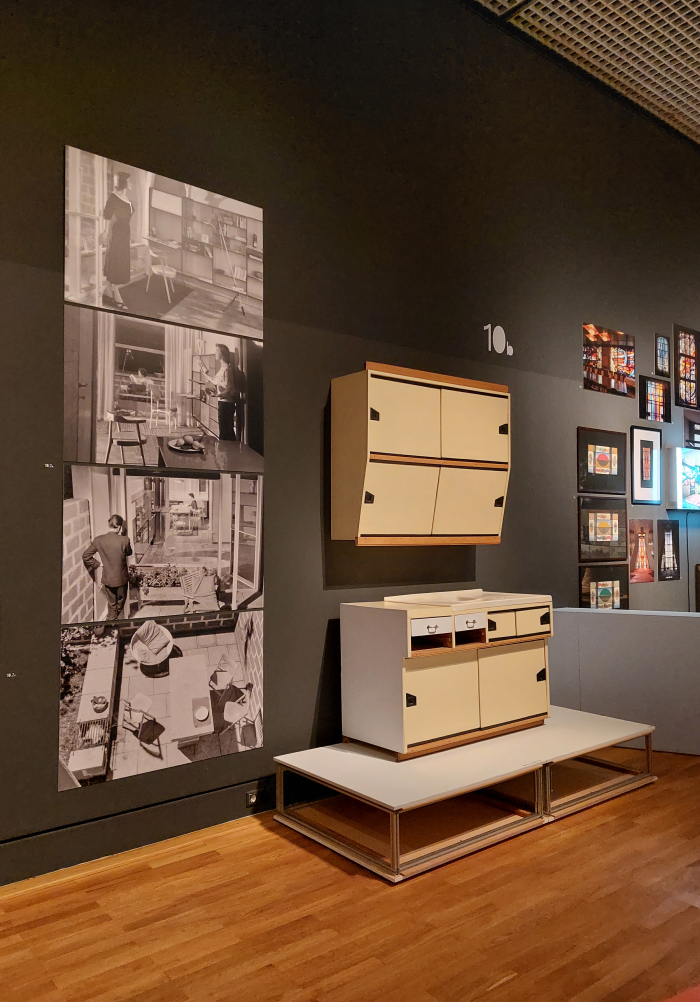
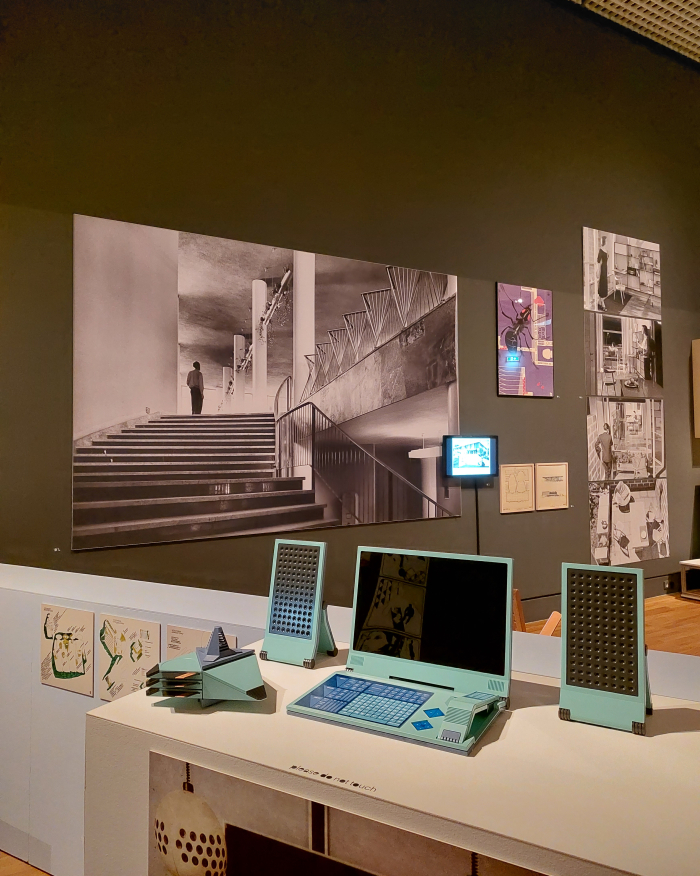
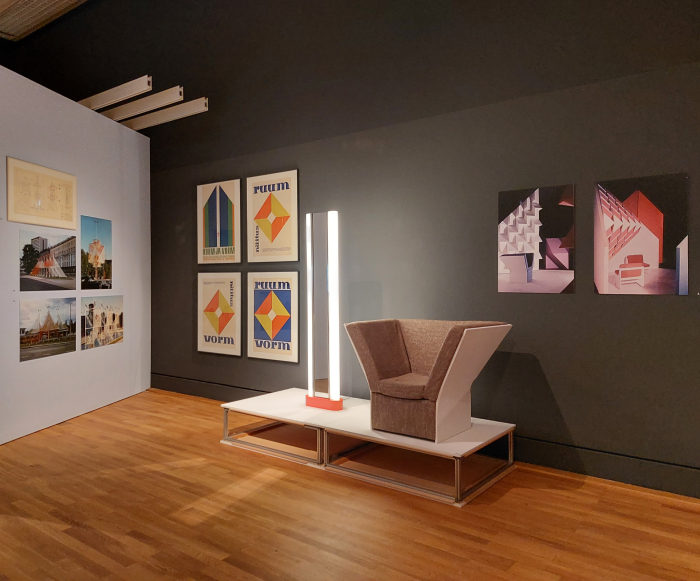
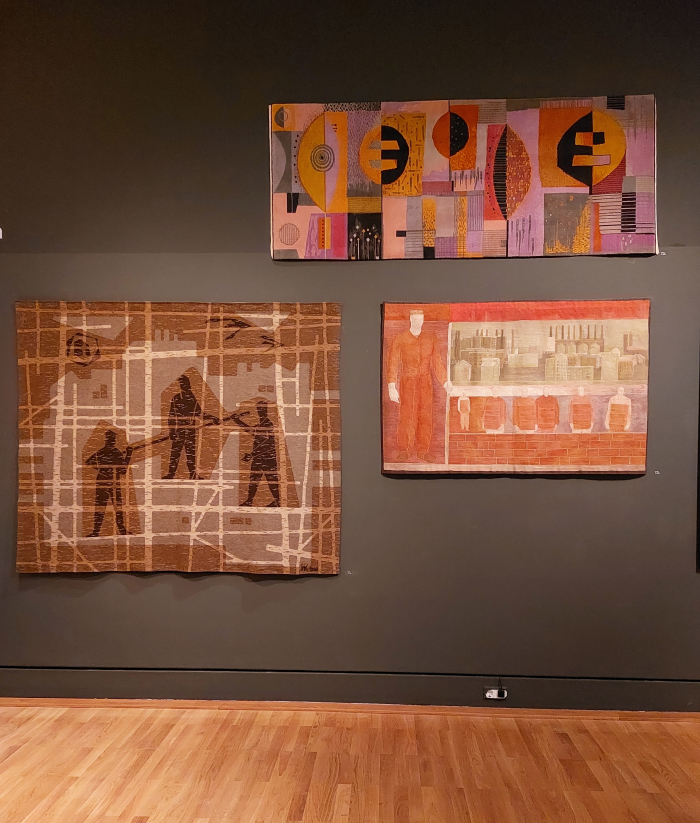
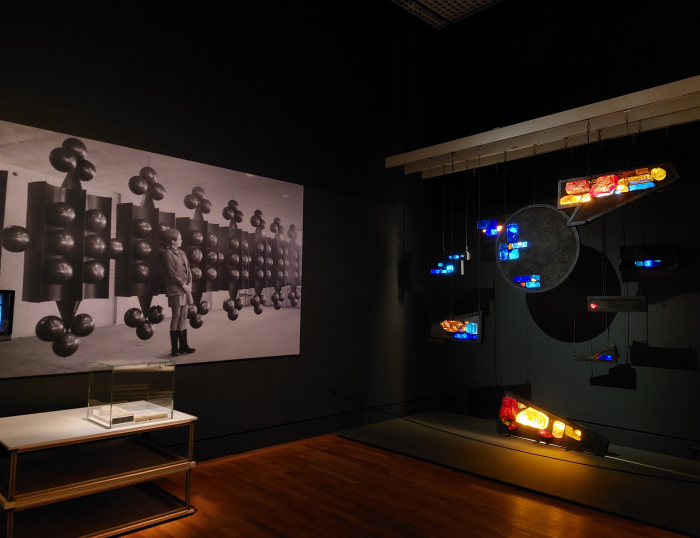
1And that arguably not only in the west of Europe, but potentially also in the east. Or put another way, we're so busy bashing the west, we've no time to bash the east; however there are arguably, invariably, a great many in eastern Europe who bought into the denigration of design in and from eastern Europe propagated by the West, and/or who in the 1990s rejected everything that was that pre-1989 as a component of their general repudiation of the old system, and who today have, for want of a better phrase, western understandings of eastern design. And thus we can well imagine, we don't know, but wouldn't be surprised if the situation in eastern Germany Klára Němečková, from the Kunstgewerbemuseum Dresden, described in context of the exhibition German Design 1949–1989. Two Countries, One History doesn't equally apply to the wider region, wouldn't be surprised if that reality in which, as Němečková noted, "in the former East people are often surprised to see the material culture of the DDR, that which was largely rejected after 1990, in a museal context, to see it lauded and presented as a good design", didn't apply just as readily to design in and from Croatia, the Czech Republic, East Germany, Estonia, Hungary, Lithuania, Poland, Slovakia, Slovenia and the Ukraine. And which is another aspect that needs to be approached, reception of the objects on show in Retrotopia in their lands of origin.
2While not all institutions are discussed in Retrotopia in their native language many are, and where they are we use the native names because that's what you'll need to research them online. Which you must do. And also because we here in western Europe need to become a lot less scared of the language, and the letters, of eastern Europe. And stop using the problems of language as an excuse for not learning more about eastern Europe.
3Anna Maga, Utopia: Love it or leave it?, in Claudia Banz [Ed.] Retrotopia. Design for Socialist Spaces, Verlag Kettler, Dortmund, 2023